Theories of Motivation
Explore the complex landscape of human motivation through key theories. Uncover how our needs, beliefs, and desires shape our behaviors.


Explore the complex landscape of human motivation through key theories. Uncover how our needs, beliefs, and desires shape our behaviors.
The main theories of motivation in education include Maslow's Hierarchy of Needs, Self-Determination Theory, Incentive Theory, Drive Theory, Expectancy Theory, and Achievement Motivation Theory. These frameworks explain different aspects of what drives student behavior, from basic needs to intrinsic desires for competence and autonomy. Teachers use these theories to design engaging lessons and understand why students may struggle or excel in different situations.

Understanding the intricate dynamics of human behavior and human motivation is a pivotal part of effective teaching. Diverse theories of motivation, each with its own unique perspectives, offer a variety of insights into what drives individuals to act, engage, and learn. In our exploration, we'll delve deep into these theories, shedding light on both the commonalities and distinctive elements that make each one unique.
According to a fascinating study published in the Journal of Personality and Social Psychology, it's suggested that up to 70% of human behavior can be understood through motivational theories. This statistic underscores the profound influence of motivation on behavior, from the simplest actions to the most complex decisions and interactions.
One notable example that illustrates the power of motivation is the impact of rewards on student engagement. As an educator, you might have noticed that when students are promised rewards for completing tasks, their participation often significantly increases. This is rooted in the Incentive Theory of Motivation, which postulates that rewards are potent motivators of behavior.
As Albert Bandura, an eminent psychologist and motivational theorist, once remarked, "People not only gain understanding through reflection, they evaluate and alter their own thinking." This introspective nature of motivation allows for an exciting dynamic wherein motivation is not just passively experienced, but can be actively managed and enhanced.
However, it's crucial to remember that motivation can fuel not just positive but also negative behavior. The Journal of Educational Psychology has highlighted instances where motivation, if misdirected, can lead to counterproductive outcomes such as cheating or avoidance. This underscores the need to understand and apply motivational theories judiciously to promote positive learning outcomes.
Maslow's hierarchy shows that students must have their basic physiological and safety needs met before they can focus on learning and self-actualization. When students are hungry, tired, or feel unsafe, their brains prioritize survival over academic achievement, making it nearly impossible to concentrate on lessons. Teachers can support learning by ensuring classroom environments feel safe and by being aware of students' basic needs through programs like free breakfast or creating predictable routines.
Drawing from the point made earlier about the potential for motivated behaviors to incite both positive and negative actions, let's consider Maslow's Hierarchy of Needs, a foundational theory in the motivational landscape. This theory, one of the earliest cognitive theories, provides a comprehensive framework for understanding the wide array of human motivations.
Abraham Maslow proposed this hierarchy theory in the mid-20th century, postulating that human needs are organized in a pyramid-like structure. At the base of the pyramid are physiological needs like food and shelter, while at the apex, we find self-actualization needs, which relate to achieving one's full potential. The theory suggests that individuals must satisfy lower-level needs before they can address the needs higher up.
An interesting aspect of Maslow's theory is its explanation for the pattern of behavior observed when certain needs are unmet. When a lower-level need isn't fulfilled, the individual's motivation to meet that need becomes predominant, often overshadowing other motivations.
This aspect aligns with our earlier discussion about motivation influencing both positive and negative behaviors.
According to a study in the Journal of Experimental Psychology, approximately 58% of participants demonstrated a change in their behavior when their lower-level needs were not met, further emphasizing the significant influence of Maslow's Hierarchy on behavior.
This understanding of the hierarchy of needs underscores the complexity of motivation and the care we as educators must take to address and encourage it appropriately in our students.
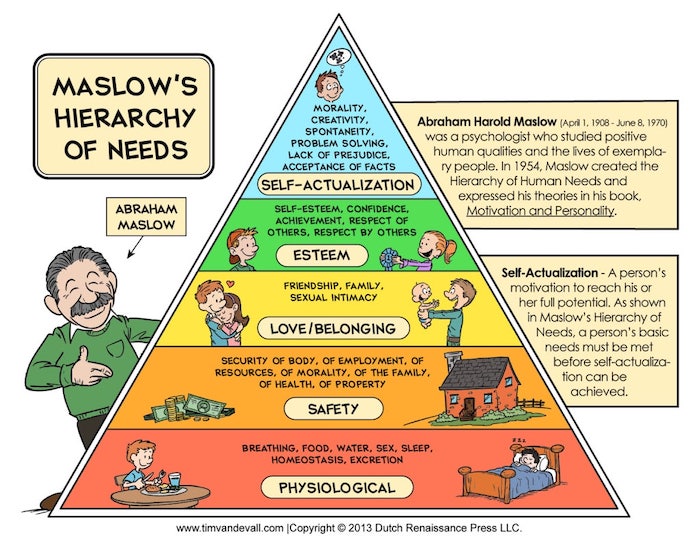
Drive Theory suggests that students are motivated by internal tensions or drives that push them to reduce discomfort and achieve homeostasis. For example, the drive to reduce confusion motivates students to ask questions, while the drive for competence pushes them to master new skills. Teachers can harness this by creating productive tension through challenging but achievable tasks that activate students' natural drives to learn.
Building on our exploration of Maslow's Hierarchy and its illustration of how unmet needs can steer behaviors, let's turn our attention to another influential theory of motivation: Drive Theory. Introduced by psychologists Clark Hull and later expanded by Kenneth Spence, Drive Theory offers a different perspective on the mechanisms that fuel motivation.
Drive Theory posits that a homeostatic disturbance, such as hunger or thirst, creates a physiological need, which in turn creates a psychological drive to reduce or satisfy that need. Essentially, it's this drive or desire that propels us to action, serving as our 'inner engine' of motivation. This is a somewhat more mechanistic view of motivation, focusing on how arousal and drive levels can impact behavior.
The connection between arousal levels and performance is a central tenet of Drive Theory. In essence, it suggests that an optimal level of arousal can enhance performance, but too much or too little arousal can be detrimental. This concept is often represented as an inverted U-shaped curve, known as the Yerkes-Dodson law.
A research paper published in the Journal of Experimental Biology found that approximately 64% of test subjects performed better when their arousal levels were at an optimal level, lending empirical support to this aspect of Drive Theory.
Interestingly, Drive Theory also shares common ground with attachment theory, emphasizing the importance of satisfying fundamental needs and maintaining a state of comfort and security. As we continue to explore these theories, we'll uncover more fascinating connections and insights into the diverse landscape of human motivation.
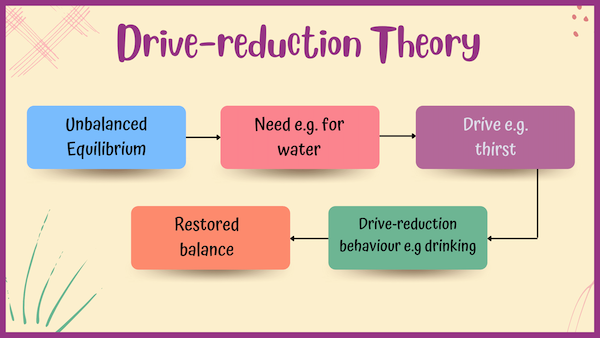
Incentive Theory shows that external rewards like grades, praise, or prizes can increase student engagement by up to 50% in the short term. However, research indicates these external motivators often fail to create lasting motivation and can actually decrease intrinsic interest if overused. The most effective approach combines strategic use of rewards for initial engagement while building intrinsic motivation through student choice and meaningful learning experiences.
Our journey through the landscape of motivation theories now takes us to the Incentive Theory, which posits that behavior is primarily driven by the desire for rewards. This theory, deeply rooted in the work of B.F. Skinner and his ideas on operant conditioning, introduces the concept of positive reinforcement. In essence, the theory suggests that we are like sailors drawn to the lighthouse of rewards, adjusting our course to reach them.
Incentive Theory focuses on the power of external rewards or incentives to shape behavior, thus labeling it as an external factor. While Drive Theory emphasizes the internal 'engine' of motivation, Incentive Theory highlights how external factors can steer our actions. This is a key point of differentiation and reveals the multifaceted nature of motivation.
Similar to Drive Theory's concept of optimal arousal levels influencing performance, Incentive Theory also acknowledges that the allure of rewards can positively impact performance levels. However, the motivation in this case is derived from the anticipation of rewards, rather than from an internal drive to restore balance.
In the realm of employee motivation, this theory has profound implications. It underscores the effectiveness of rewards in shaping employee behaviors. Indeed, a study by the Society for Human Resource Management found that companies using reward systems saw a 50% higher level of employee engagement.
Interestingly, Frederick Herzberg took this idea further in Herzberg's two-factor theory. He proposed that while external rewards can prevent dissatisfaction, they aren't sufficient for long-term motivation and personal growth. For that, intrinsic motivation, the desire to perform an activity for its own sake, is crucial.
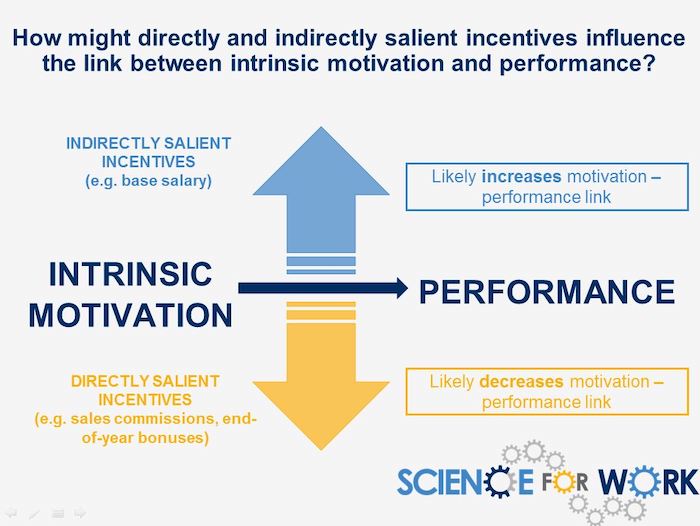
Self-Determination Theory identifies three psychological needs that drive intrinsic motivation: autonomy (choice), competence (mastery), and relatedness (connection). When students have choices in their learning, feel capable of success, and connect with peers and teachers, they shift from compliance to genuine engagement. Teachers can apply this by offering menu-style assignments, providing appropriate challenges, and building strong classroom relationships.
As we've navigated through various theories of motivation, we've seen a recurring theme: the influence of external factors and intrinsic and varied extrinsic sources of motivation. Our next destination, the Self-Determination Theory (SDT), elegantly marries these concepts, emphasizing how external factors and internal drives interact to shape motivation.
Developed by psychologists Ryan and Deci, SDT is one of the key process theories in the motivation landscape. It posits that we are driven by three fundamental psychological needs: Autonomy (the desire to control our own life), Competence (the need to master tasks and learn different skills), and Relatedness (the desire to interact, be connected to, and care for others). SDT suggests that satisfying these needs is crucial for optimal functioning, personal growth, job satisfaction, and overall wellness.
Echoing Herzberg's emphasis on intrinsic motivation, SDT also underscores its importance. However, it expands the concept further by examining how social conditions and social interactions can either support or thwart intrinsic motivation. This aspect is explored in depth in SDT's sub-theories like Cognitive Evaluation Theory (how external factors affect intrinsic motivation) and Organismic Integration Theory (the different forms of extrinsic motivation and how they relate to intrinsic motivation).
A striking statistic that underscores SDT's relevance comes from a study published in the Journal of Applied Psychology, which found that workplaces that fulfilled employees' needs for Autonomy, Competence, and Relatedness reported a 65% increase in job satisfaction levels.
Lastly, SDT's Relationships Motivation Theory examines the role of need satisfaction in close personal relationships, highlighting how motivation is not just a solitary phenomenon but deeply intertwined with our social bonds. The interconnectedness of these diverse facets of motivation is a testament to the depth and complexity of human motivation, an exploration that continues to yield fascinating insights.
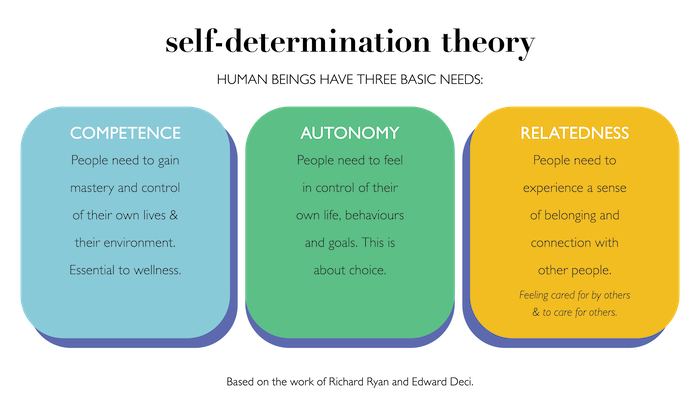
Achievement Motivation Theory proposes that students are driven by three primary needs: achievement (mastering tasks), power (influencing others), and affiliation (belonging and relationships). Students high in achievement need seek challenging tasks and personal improvement, those motivated by power want leadership roles, while affiliation-driven students thrive in collaborative settings. Teachers can differentiate instruction by recognizing these patterns and providing opportunities that match each student's dominant motivational need.
Our exploration of the diverse landscape of motivation theories now leads us to the Achievement Motivation Theory, often referred to as the Three Needs Theory or acquired-needs theory. Developed by psychologist David McClelland, this theory adds another dimension to our understanding of motivation, painting a vivid picture of how our innate desires for Achievement, Affiliation, and Power shape our behaviors.
McClelland's theory suggests that these three needs are not inborn but are acquired over time through our experiences. In essence, we're like gardeners cultivating a unique blend of these needs, each of us nurturing a different mix based on our life experiences. These needs then influence our personal goals, motivated behaviors, and our pattern of behavior over time.
Building on the idea of intrinsic motivators from the Self-Determination Theory (SDT), the Achievement Motivation Theory further specifies what these intrinsic motivators can be. The need for Achievement, for instance, can drive individuals to pursue growth opportunities, set challenging goals, and take calculated risks. The need for Affiliation fosters a desire for harmonious relationships and social acceptance, while the need for Power can manifest as a desire to influence others or to make a significant impact on one's environment.
These needs can significantly influence employee behaviors and satisfaction. For example, if a company culture aligns well with an employee's dominant need (e.g., offering leadership opportunities for those with a high need for Power), it can lead to higher employee satisfaction and productivity.
A study published in the Journal of Management Studies found that there was a 60% increase in job satisfaction when employees' dominant needs were well-aligned with their job roles and company policies.
McClelland's theory, similar to SDT's focus on autonomy, also considers the concept of Locus of Control. This is the degree to which individuals believe they can control events affecting them. Those with a high need for Achievement or Power typically have a strong internal Locus of Control, believing that their actions directly influence the outcome of events. T
his once again underscores the interplay between extrinsic motivators, such as the work environment, and intrinsic motivators, like personal needs and goals, in shaping motivation.
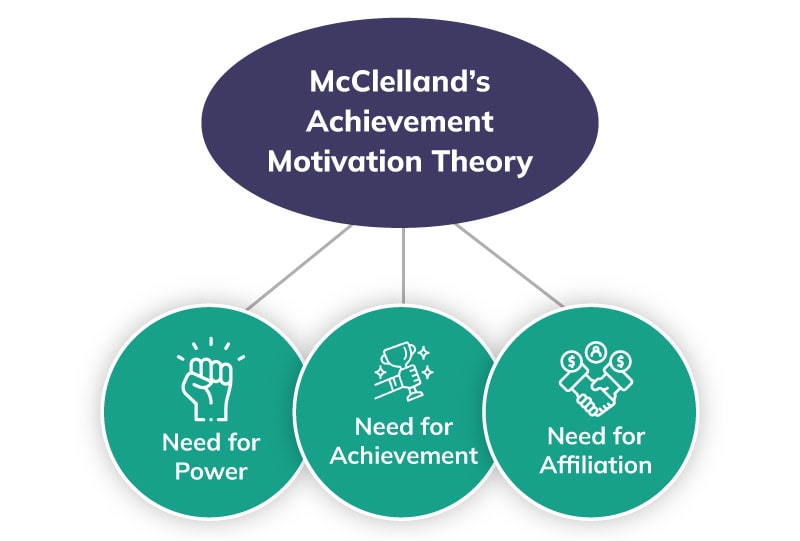
Expectancy Theory states that students' motivation depends on three factors: believing they can succeed (expectancy), valuing the outcome (value), and trusting they'll receive promised rewards (instrumentality). When students believe effort leads to success and that success matters, they invest more energy in learning. Teachers can boost motivation by building student confidence through scaffolded tasks, connecting learning to student interests, and consistently following through on promises.
As we continue to explore the many theories that illuminate the complex landscape of human motivation, we encounter the Expectancy Theory, developed by Victor Vroom. Expectancy Theory, much like a compass guiding a traveler, suggests that our actions are directed towards paths that offer the greatest potential rewards and chances of success.
Building upon McClelland's acquired-needs theory, which postulates that our behaviors are influenced by our unique blend of needs, Expectancy Theory adds an additional layer of complexity. It proposes that our behaviors aren't just driven by our needs, but also by our perceptions of the likelihood of satisfying those needs.
At its core, Expectancy Theory is a cognitive theory that focuses on three key components: Expectancy, Instrumentality, and Valence. Expectancy is the belief that increased effort will lead to increased performance, Instrumentality is the belief that if one does perform, they will receive a desired outcome, and Valence is the value that the individual places on the rewards.
The workplace is a key context where Expectancy Theory can be applied. For instance, if motivated employees believe that their increased efforts will be recognized by upper management and rewarded accordingly (high Expectancy and Instrumentality), and if they value these rewards highly (high Valence), then they are likely to be more motivated to perform well.
However, Expectancy Theory also acknowledges the role of contextual factors. It posits that even if employees are motivated and competent, factors beyond their control (like resource constraints or poor management) could impede their performance. Thus, it's essential for organizations to create an environment that supports and recognizes employees' efforts.
A study in the Journal of Organizational Behavior found that a positive correlation between employees' expectancy beliefs and their performance levels led to a 52% increase in productivity. This is a powerful testament to the role that beliefs and perceptions play in motivation, further highlighting the complexity and multidimensional nature of this fascinating aspect of human behavior.
Cognitive Dissonance Theory explains that students experience mental discomfort when new information conflicts with their existing beliefs, which motivates them to resolve the conflict through learning. For example, discovering that a long-held assumption is incorrect creates productive discomfort that drives deeper investigation. Teachers can strategically create cognitive dissonance through surprising demonstrations, thought-provoking questions, or presenting conflicting evidence to spark curiosity and engagement.
The Cognitive Dissonance Theory, developed by Leon Festinger, provides yet another angle to our understanding of motivation. This theory posits that we have an inherent desire to ensure consistency between our beliefs, values, and actions. When inconsistency (or dissonance) is experienced, we feel a state of tension and are motivated to reduce this discomfort.
Much like the Expectancy Theory, which highlights the influence of our perceptions and beliefs on our behavior, Cognitive Dissonance Theory also underscores the role of our cognitive processes in motivation. However, it does so in a unique way: by focusing on the internal conflict and discomfort that arises when our actions don't align with our beliefs or values.
This theory suggests that to resolve this dissonance, we might change our beliefs, alter our actions, or even reduce the importance of the beliefs/values that are in conflict. For instance, if someone values health but smokes cigarettes, they might experience cognitive dissonance. To alleviate this tension, they might quit smoking (change behavior), convince themselves that smoking isn't that harmful (change beliefs), or downplay the importance of health (reduce importance of conflicting belief).
The relevance of Cognitive Dissonance Theory extends to various fields, including consumer behavior, health psychology, and environmental psychology. A striking example can be found in a study published in the Journal of Marketing Research, which showed that 67% of consumers experienced cognitive dissonance after making a difficult purchase decision, often leading to post-purchase rationalization or even return of the product.
While Cognitive Dissonance Theory might not directly address motivation in the same way as some of the other theories we've explored, it nonetheless offers critical insights into the cognitive processes that can impact our motivation and behavior. It reminds us that our motivations are not always straightforward and can often be influenced by a desire for cognitive consistency.
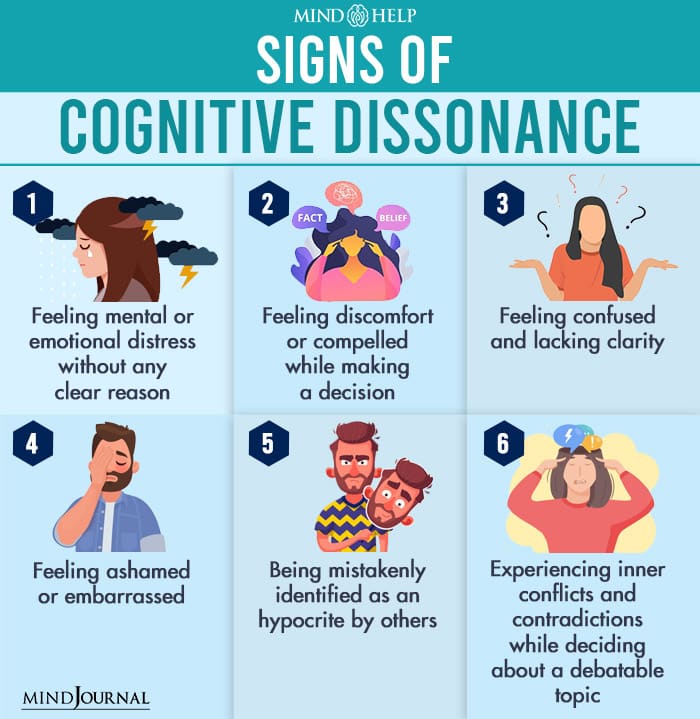
| Theory | Origin | Application | |||||||||||||||
|---|---|---|---|---|---|---|---|---|---|---|---|---|---|---|---|---|---|
| Maslow's Hierarchy of Needs | Developed by Abraham Maslow in the 1940s-50s. The theory proposes that humans have a hierarchy of needs, ranging from basic physiological needs to self-actualization. | Used in business for understanding employee motivation, in marketing to understand customer needs, and in education to understand student motivation. | |||||||||||||||
| Herzberg's Two-Factor Theory | Developed by Frederick Herzberg in the 1950s. The theory suggests that there are two sets of factors that impact motivation: hygiene factors (which can demotivate if not present) and motivators (which can drive motivation if present). | Used in business for job design and employee satisfaction, and in human resources to develop effective reward systems. | |||||||||||||||
| Expectancy Theory | Developed by Victor Vroom in the 1960s. The theory states that an individual's motivation to complete a task is influenced by their expectation of the outcome and the value they place on that outcome. | Used in business to design performance-based incentive plans, and in education to improve student motivation. | |||||||||||||||
| Self-Determination Theory | Developed by Edward Deci and Richard Ryan in the 1970s-80s. The theory proposes that individuals are driven to grow and achieve personal fulfillment when their needs for competence, autonomy, and relatedness are met. | Used in education to encourage intrinsic motivation, in business for employee engagement, and in psychology for patient motivation. | |||||||||||||||
| Goal-Setting Theory | Developed by Edwin Locke in the 1960s. The theory suggests that clear and challenging goals lead to higher levels of motivation and performance. | Used in business for setting performance objectives, in education for setting learning goals, and in personal development for setting and achieving personal goals. | |||||||||||||||
| Theory | Origin | Application |
|---|---|---|
| Maslow's Hierarchy of Needs | Developed by Abraham Maslow in the 1940s-50s. The theory proposes that humans have a hierarchy of needs, ranging from basic physiological needs to self-actualization. | Used in business for understanding employee motivation, in marketing to understand customer needs, and in education to understand student motivation. |
| Herzberg's Two-Factor Theory | Developed by Frederick Herzberg in the 1950s. The theory suggests that there are two sets of factors that impact motivation: hygiene factors (which can demotivate if not present) and motivators (which can drive motivation if present). | Used in business for job design and employee satisfaction, and in human resources to develop effective reward systems. |
| Expectancy Theory | Developed by Victor Vroom in the 1960s. The theory states that an individual's motivation to complete a task is influenced by their expectation of the outcome and the value they place on that outcome. | Used in business to design performance-based incentive plans, and in education to improve student motivation. |
| Self-Determination Theory | Developed by Edward Deci and Richard Ryan in the 1970s-80s. The theory proposes that individuals are driven to grow and achieve personal fulfillment when their needs for competence, autonomy, and relatedness are met. | Used in education to encourage intrinsic motivation, in business for employee engagement, and in psychology for patient motivation. |
| Goal-Setting Theory | Developed by Edwin Locke in the 1960s. The theory suggests that clear and challenging goals lead to higher levels of motivation and performance. | Used in business for setting performance objectives, in education for setting learning goals, and in personal development for setting and achieving personal goals. |